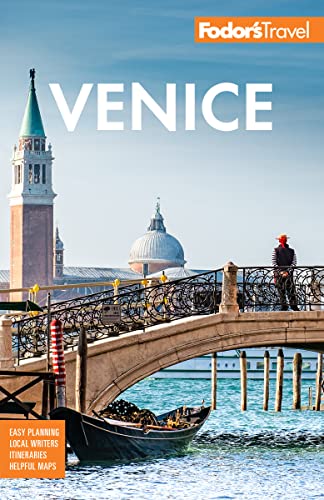A Great Venice Itinerary
Three days are hardly enough to see one of the world’s most beautiful cities and one of the cradles of modern Western civilization. But running from museum to museum, church to church would be a mistake, since Venice is a wonderful place to stroll or "hang out," taking in some of the atmosphere that inspired such great art.
Day one
The first things you will probably want to do in Venice are to take a vaporetto ride down the Grand Canal and see the Piazza San Marco. These are best done in the morning; before 8:30 you'll avoid rush hour on the vaporetto, and although there's likely to be a line at San Marco when it opens, you'll be better off then than later in the day. Move on to the adjacent Palazzo Ducale and Sansovino’s Biblioteca Marciana.
For lunch, take Vaporetto 1 to the Ca’ Rezzonico stop and have a sandwich and a spritz in the Campo Santa Margherita, where you can mingle with university students in one of Venice’s most lively squares. From there, make your way to the Galleria dell’Accademia and spend a few hours taking in its wonderful collection of Venetian painting. In the evening, take a walk up the Zattere and have a drink at one of the cafés overlooking the Giudecca Canal.
Day two
If the Accademia has whet your appetite for Venetian painting, visiting churches and institutions where you can see more of it. For Titian, go to Santa Maria Gloriosa dei Frari church and Santa Maria della Salute; for Tintoretto, Scuola Grande di San Rocco; for Bellini, the Frari San Giovanni e Paolo, and San Zaccheria; for Tiepolo, Ca’ Rezzonico, Scuola Grande dei Carmini, and the Gesuati; for Carpaccio, Scuola di San Giorgio; and for Veronese, San Sebastiano. If your taste runs to more-modern art, there is the Guggenheim Collection and, down the street from it, the Pinault collection in the impressively refashioned Punta della Dogana.
In the afternoon, head for the Fondamenta Nuova station to catch a vaporetto to one or more of the outer islands: Murano, where you can shop for Venetian glass and visit the glass museum and workshops; Burano, known for lace making and colorful houses; and Torcello, Venice's first inhabited island, home to a beautiful cathedral.
Day three
Venice is more than a museum—it's a lively city, and the best way to see that aspect is to pay a visit to the Rialto Market. Venetians buy their fruits and vegetables and, most important, their fish, at one of Europe’s largest and most varied fish markets. Have lunch in one of the excellent restaurants in the market area. There’s certainly a good deal more art and architecture to see in the city, and if you can’t resist squeezing in another few churches, you may want to see Palladio’s masterpiece of ecclesiastical architecture, the Redentore church on the Giudecca, or Tullio Lombardo’s lyrical Miracoli, a short walk from the San Marco end of the Rialto Bridge.




